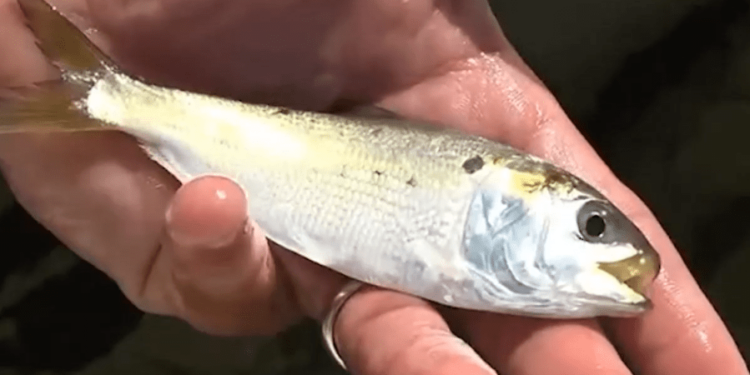
RICHMOND, Va. (WFXR) — A third effort in the 2025 Virginia General Assembly session to provide funding for a study of Atlantic menhaden numbers in Virginia’s portion of the Chesapeake Bay has been killed.
A measure by Del. Betsy Carr (D-Richmond) would have created a budget amendment to fund the first year of a three-year study. However, it was cut from the budget during negotiations between the Virginia Senate and the Virginia House.
Conservation and fishing groups have been pushing for the study because they claim menhaden numbers are down in the bay, and that it is having an adverse effect on fish, aquatic mammals, and bird that depend on the tiny fish for food.
“We needed the science to better manage our menhaden resource in the Chesapeake Bay,” said Chesapeake Bay Foundation Virginia Executive Director Chris Moore. “Unfortunately, we’re not going to have it for at least another year.”
The research would have been done by the Virginia Institute of Marine Science.
Menhaden is the target of an industrial reduction in fishing in the bay. Virginia is the only state on the Atlantic Coast that allows industrial reduction fishing in estuaries like the Chesapeake. It is being done by one company, Omega Protein. Omega employs more than 200 people at its base of operations in Reedville.
Omega released the following statement:
“In 2023, the Virginia Institute of Marine Science (VIMS) proposed a three-year, $2.8 million menhaden study using a novel approach: acoustic tagging survey technology to assess menhaden populations. A workshop was held to evaluate the proposal, and the technology was deemed innovative, while acknowledging it was untested for this application. During the recent Virginia legislative session, a House budget amendment to fund the VIMS study was not included in the final bill language.
As a way to jumpstart some of the work, industry stakeholders proposed a compromise: rather than fully funding the $2.8 million study, it was suggested allocating state dollars for a pilot study to evaluate the effectiveness of the acoustic tagging technology. Given its economic significance, concerns arose about relying on an unproven method to make decisions affecting the livelihoods of hundreds of workers. Fishing industry stakeholders do believe that if successful, acoustic technology could enhance fishery assessments. However, no agreement was reached to support a pilot study, leading to the amendment’s exclusion from the budget.
The available data on the menhaden population suggests that no drastic management actions are necessary at this time. Regulators have set harvest levels in the Chesapeake Bay at one-third of historic levels as a precautionary measure. Juvenile menhaden abundance is increasing, and analyses of scientific studies have concluded that the challenges facing striped bass are not caused by a lack of menhaden. While menhaden are an important food source for striped bass, striped bass decline is driven primarily by overfishing, environmental degradation, and disease.
Regardless of the scientific model that regulators ultimately choose, we urge them to commit to a properly-designed, adequately-funded study of sufficient duration. Omega Protein and Ocean Harvesters look forward to working with VIMS and the VMRC in the future to better understand menhaden abundance in the Chesapeake Bay.”
The company says menhaden numbers are sustainable. It points to coastwide numbers to back that up.
However, critics say 70% of menhaden harvested on the Atlantic Coast are taken in Virginia waters. They say coastwide numbers aren’t a good measure of what is happening locally.
“Unfortunately, we still manage menhaden based on the resource that’s modeled from Maine to Florida.” said Moore. “That modeling effort although good and getting better each time we do it, it can’t take into account what’s happening specifically in Chesapeake Bay. When we have such a large fishery here in Chesapeake Bay, we really need better answers. That’s what this study was set up to do.”







